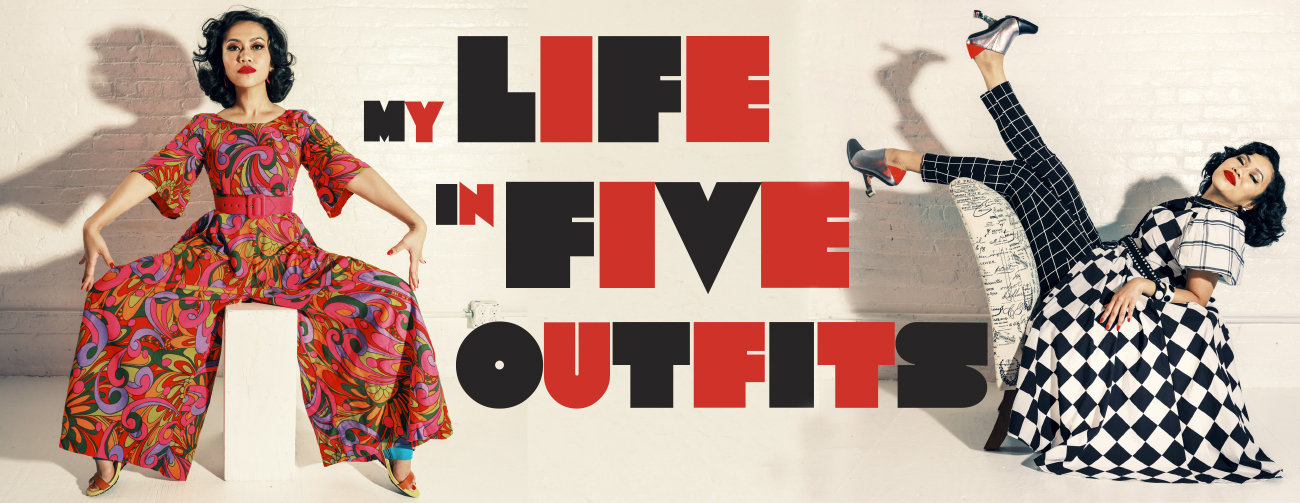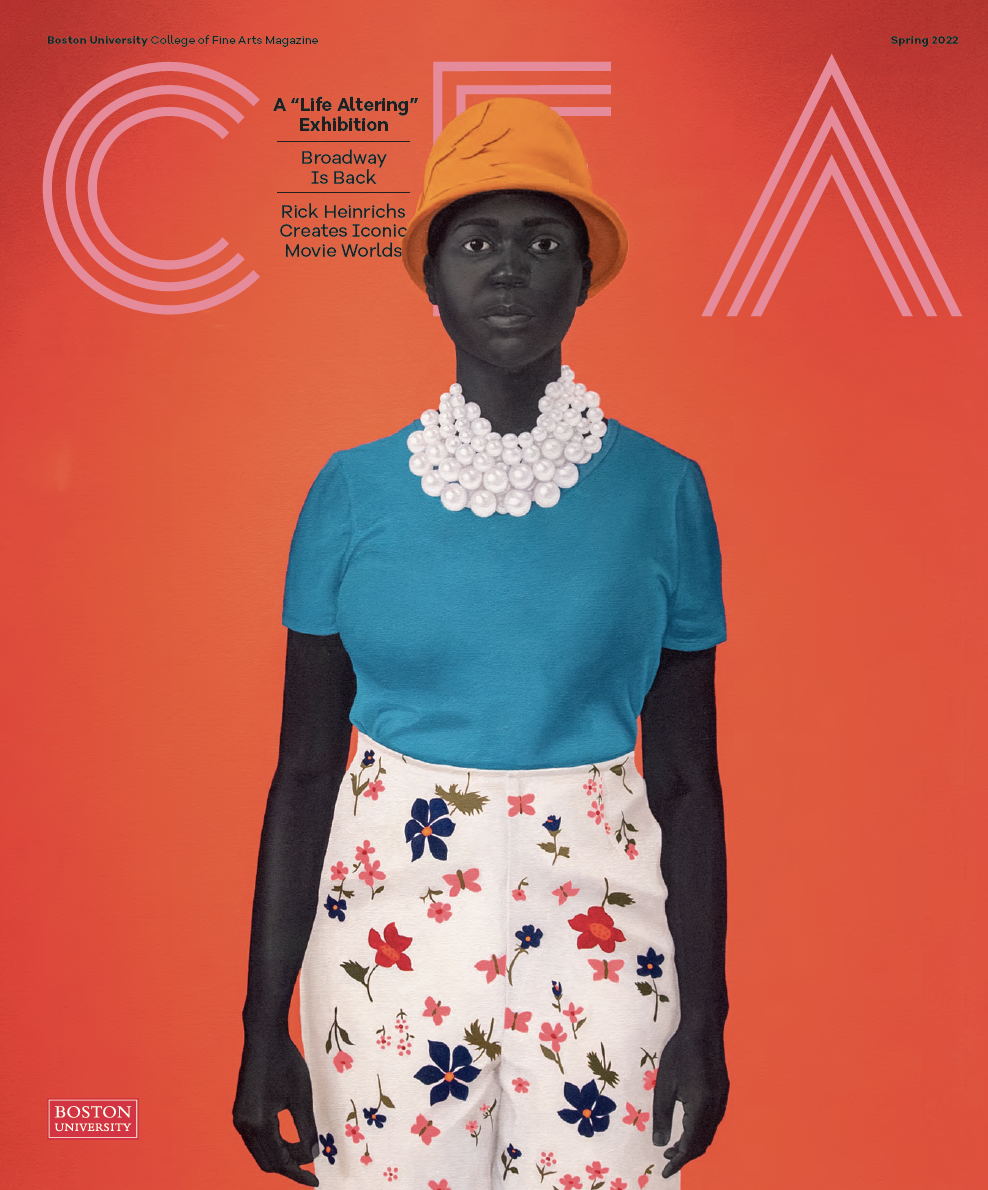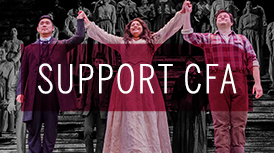My Life in Five Outfits
Raissa Bretaña studies history through a fashion lens and fact-checks the wardrobes of popular television series, including Bridgerton and The Marvelous Mrs. Maisel
By Mara Sassoon | Photos by Chris Sorensen
In the weeks after the Netflix miniseries The Queen’s Gambit premiered in October 2020, sales of chess sets skyrocketed. The show, which takes place over the course of about ten years from the mid-1950s, follows the fictional chess prodigy Beth Harmon, charting her meteoric—and at times rocky—rise from orphan to internationally renowned phenom.
The show was also responsible for the resurgence of another trend: 1960s fashion. Harmon’s evolution in the show is visually portrayed through her changing style over the years, and viewers were quick to take notice of the attention to fashion detail. Soon, articles with titles like “The Trends from The Queen’s Gambit I Want to Copy” were popping up, offering advice on how to rock the winged eyeliner, flipped hair, checkered coats, and headscarves Harmon, played by Anya Taylor-Joy, wears in the series.
The miniseries’ costumes also caught the attention of Glamour magazine, which included the show in its popular “Would They Wear That?” video series, in which fashion historians, including Raissa Bretaña, fact-check hair, makeup, and wardrobe in films and television series like Grease, Bridgerton, The Marvelous Mrs. Maisel, and even Snow White. Bretaña (’13), who studied costume design at CFA, reviews some of Harmon’s many looks in The Queen’s Gambit, from the pageboy hairstyle and plaid pinafore she wore as a high schooler in Lexington, Ky., to the modernist mint green and black color block dress she wears at the Paris Invitational chess tournament later in the series. Bretaña’s final verdict: Harmon’s wardrobe was pretty accurate.
Watch: Fashion historian Raissa Bretaña fact-checks the historical accuracy of costumes in the Netflix’s hit miniseries The Queen’s Gambit. Video courtesy of Glamour
“Most people know me through the Glamour videos,” Bretaña says, “but it’s just a small fraction of the work that I do as a fashion historian. I feel like part of my greater mission as a fashion historian is making this information accessible and entertaining, and advocating for fashion history as a legitimate branch of history. It’s been heartening to know that there are people who are interested in this, that the field is growing and becoming more widely recognized.”
Below, Bretaña takes CFA readers behind the scenes of her well-tailored career through five outfits.
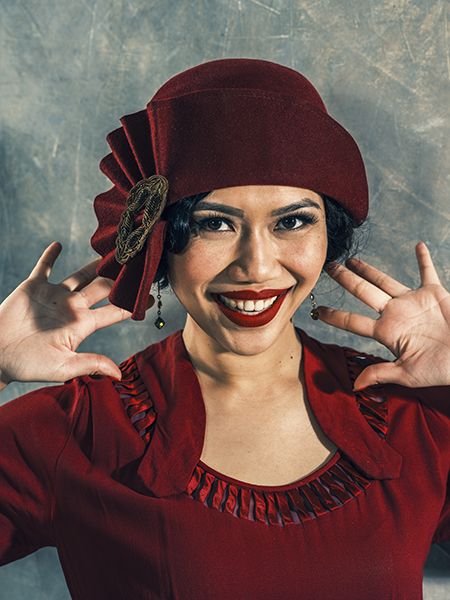
At CFA, Bretaña honed her millinery, or hat-making, skills. She wears a 1920s-style cloche hat she created.
Hat Tricks
Bretaña, who grew up in Los Angeles, Calif., designed costumes for local community theater performances in middle and high school. She had her sights set on becoming a professional costume designer for theater and film and thought CFA’s costume design program would be the perfect place to polish her skills.
“It was a conservatory style program. I knew I’d be getting hands-on training, very specified coursework, and very small class sizes,” she says. There were only five costume design majors in her graduating class. “I got to take classes that I might not have gotten to take in other BFA programs, like fabric dyeing and millinery,” or hat-making, a skill she continues to use today as she makes hats on a freelance basis.
Costume Relics
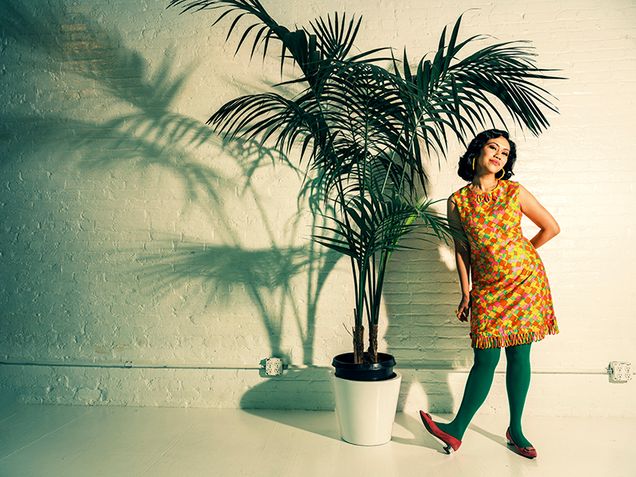
Bretaña wears a shift dress, colorful tights, and square-heeled shoes, which would have been popular in the 1960s. As an intern at a Hollywood costume company, she conducted wardrobe research for the 1960s-set show Mad Men.
“Ultimately, I found my true passion is fashion history, and not through any fault of the theater—it’s still my first love,” Bretaña says. She realized this during two internships at Western Costume in North Hollywood, Calif., which she did over the summers after her sophomore and junior years. Western Costume was established in 1912 and is one of the oldest film and TV costume houses in the world, having started outfitting movies from the very early days of the silent era.
“I did an internship in their research library because I thought I wanted to be an award-winning costume designer, and I understood that in order to do that I had to work with award-winning costume designers.” She conducted research for designers on productions including American Horror Story: Asylum and Mad Men—both set in the 1960s.
“I really fell in love with the research aspect of it. I was poring through old issues of Vogue, as well as Sears catalogs for shows like Mad Men, and I really loved looking at these primary sources,” she says. She would later fact-check Mad Men in a Glamour video.
During her internships, Bretaña also supervised Western Costume’s star collection, what she describes as a “temperature-controlled fortress of Hollywood history” that contains some of the most valuable costume pieces from film history, including a blue-gray dress Vivien Leigh wore in Gone with the Wind, the hat Claude Rains wore as Captain Louis Renault in Casablanca, the traveling clothes from The Sound of Music, and items from Elizabeth Taylor’s Cleopatra.
“At the time, I don’t think I realized how lucky I was to have these internships. The whole experience was really instrumental in helping me discover my love for fashion history.”

A lecture at Boston’s Museum of Fine Arts on an exhibit called Think Pink, which explored the gendered history of the color pink in fashion, inspired Bretaña to become a fashion historian. Here, she wears a 1970s pink flared jumpsuit and wedge sandals.
Think Pink
“A year after graduating, I had a moment where I realized that I did not want to continue doing costume design professionally, which was very harrowing because I spent my entire adolescence and college years working toward that,” says Bretaña.
The epiphany came during a lecture at Boston’s Museum of Fine Arts on an exhibit called Think Pink, which explored the gendered history of the color pink in fashion. “It felt like the doors were flying open. I had been there a million times. I’d seen all of their fashion exhibitions, but until then I never thought of who curated the shows,” she says. “I didn’t even know that you could bring together gender history, social history, fashion history, and art history, all into this one profession.“ After the talk, she approached the show’s curator, Michelle Tolini Finamore. “I basically said, ‘How do I become you when I grow up?’”
The two had lunch the following week and Tolini Finamore offered Bretaña an internship. After Bretaña interned at the MFA, Tolini Finamore encouraged her to get her master’s degree in fashion and textile studies at the Fashion Institute of Technology (FIT) in New York.

Bretaña, who wears a pair of futuristic heels, knows a thing or two about shoes. She’s written a book that looks at the history of footwear over four hundred years.
Shoe Savvy
Today, Bretaña is an adjunct instructor at FIT—where she got her master’s—and Pratt Institute, where she teaches courses on 20th-century fashion and art, the history of costume and fashion in film, and the history of modern fashion. “My favorite period of fashion in this span is probably from 1910 to 1914, like we see in Titanic,” she says. “This is the birth of modern dress, when you really see some incredible design.”
But Bretaña emphasizes that teaching is just one other component of her multifaceted career. “There is no blueprint for how to become a fashion historian because it’s a relatively young occupation, and fashion history has only recently been acknowledged as a viable field of study. My day job is teaching—and I love it—but that’s less than 50 percent of what I actually do.”
Besides teaching and hosting the Glamour videos, Bretaña also recently wrote the book Shoes (Abbeville Press, 2021), a visual history spanning four hundred years of footwear, showcasing rare items that can be seen in museums around the world.
“There is no set career path for this profession, and there are also very few jobs. So I feel very lucky to be working so much.”
Hollywood History

Bretaña was a fashion consultant on Netflix’s miniseries Hollywood, about the film studio system in the late 1940s. She wears a 1940s-style gown similar to the fashion displayed in the show’s Oscar episode.
Bretaña also conducts fashion research for film and television as a consultant. “That’s probably some of my favorite work that I do because it makes me feel like I’m back at Western Costume,” she says. During her internships at Western, she worked with the noted costume designer Lou Eyrich on American Horror Story: Asylum and the two stayed in touch. Since then, she’s helped Eyrich with research for FX’s Pose, about New York City’s drag ball culture in the late 1980s and early 1990s, and Netflix’s Hollywood, about the film studio system in the late 1940s.“Being a consultant on Hollywood was probably my ultimate dream job,” says Bretaña. She primarily did research for the show’s finale, set at the 1948 Oscars. The creators and producers wanted to recreate the clothing worn by every nominee, presenter, and attendee. So Bretaña pored over back issues of the Hollywood Reporter, Vogue, Women’s Wear Daily, and tabloids from the time to look for clues. A big challenge was that all of the photos she encountered were in black and white, so she also looked for descriptions of colors and fabrics in fashion columns. One flashback scene in the finale depicts Hattie McDaniel, played by Queen Latifah, winning a Best Supporting Actress Oscar for her role in Gone with the Wind at the 12th Academy Awards in 1940. McDaniel was the first Black actor to receive an Oscar.
“She was endlessly photographed, but nobody really talks about the color of her dress. I went on a wild goose chase, and eventually found it—it was aqua blue. I got that information to the designer at, like, 3 am in order for them to make the outfit so that Queen Latifah could wear it for shooting the next day. It was exhilarating.”

